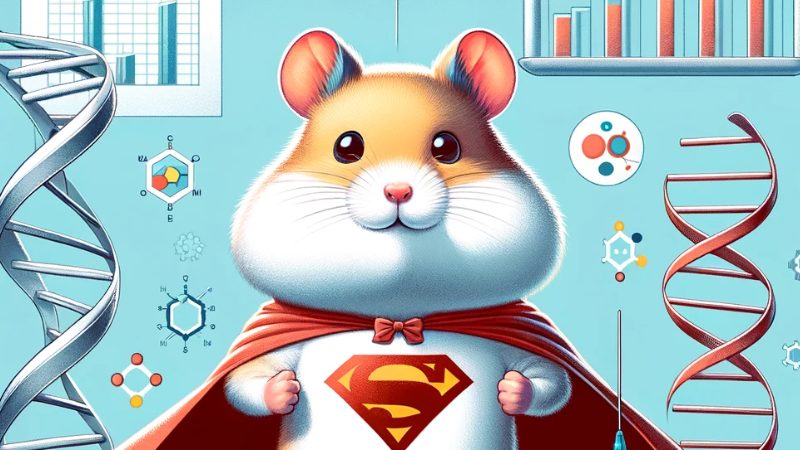Author: Martin Trinker & Nicole Borth
In the vast realm of biopharmaceuticals, where science meets innovation, a microscopic hero has emerged—Chinese Hamster Ovary (CHO) cells. These unassuming cells have become the unsung champions of our quest for groundbreaking therapies, weaving a tale of genetic intricacies and technological triumphs.
Prologue: The Rise of Biopharmaceuticals
Before we plunge into the fascinating world of CHO cells, let’s set the stage. Biopharmaceuticals, the superheroes of modern medicine, are our allies against life-threatening diseases. From monoclonal antibodies to intricate protein formats, they are the architects of our health security, holding the promise of a healthier
Enter the CHO Cells
Picture this: It’s 1987, and Genentech achieves a milestone that reverberates through the corridors of science—a recombinant biologic product, tissue plasminogen activator, produced using immortalized CHO cells. These unassuming cells, derived from the Chinese hamster, step into the spotlight, becoming the backbone of biopharmaceutical production.
The Grand Challenge
Fast forward to the present, and a challenge looms over the production of antibodies—the high cost. This challenge creates barriers, confining the benefits of antibody therapies to wealthy nations. But in the face of challenges, scientists at the Austrian Centre of Industrial Biotechnology (acib) don their research capes and embark on a journey to unravel the secrets of CHO cells.
Genomic Odyssey
In 2010, despite their economic and health-related significance, CHO cells lacked a genome sequence, which was in stark contrast to other industrially relevant cell lines. Imagine a puzzle missing a crucial piece. This ignited a collaborative effort, leveraging Next Generation Sequencing (NGS) capabilities. The aim? To assemble a well-annotated genome sequence accessible to the scientific community.
Objectives Unveiled
The acib team, led by Prof. Nicole Borth, orchestrated a symphony of international collaboration. Their objectives were clear:
- Provide a reference genome for the highly variable CHO cell lineages.
- Publicly present CHO-related genome, transcriptome, and proteome datasets for OPEN SCIENCE.
- Develop genome-scale metabolic models for CHO cells to predict their behaviour.
- Explore the diversity among CHO cell lineages and its implications.
- Devise new engineering approaches for efficient biologics manufacturing.
- Establish tools for synthetic biology, leading to a minimal designer cell line with improved capabilities.
The Implementation Odyssey
Understanding the molecular intricacies governing biotherapeutic protein synthesis within mammalian cells is no small feat. The acib project spanned over a decade, commencing with the publication of the Chinese hamster reference genome in 2013. The journey delved into distinct facets of cell line characterization, engineering, and the development of tools for computational biology. The result? A paradigm shift in our comprehension of cell control, which is based on epigenetic regulation and led to the establishment of tools for epigenetic engineering.
The Genome Unveiled
Creating a reference genome for CHO cells wasn’t a stroll in the park. CHO cells, being immortalized, exhibit high genetic diversity. The acib solution? Create a stable and defined reference genome using the original Chinese hamster organism. Through international collaboration and innovative sequencing strategies, a fully assembled and annotated genome of the Chinese Hamster was born — a cornerstone for advancing biopharmaceuticals.
Data, Data Everywhere
To unlock the potential of CHO cell genome-scale information, acib used specialized databases and bioinformatics tools. The CHO genome (https://chogenome.org), linked to RefSeq, ensures up-to-date annotations. The CHOmine platform (https://chomine.boku.ac.at) connects each annotated CHO gene to existing databases, creating a treasure trove for researchers and industry professionals alike.
Navigating the Maze of Diversity
CHO cells, crucial for bioprocessing, exhibit significant genetic diversity. Regulatory agencies demanded “proof of subclonality,” leading acib to sequence additional cell lines. The revelation? Genetic variants in CHO cells, but also in subclones, are frequent and variable. Genome integration of the recombinant product sequence follows patterns that indicate whether the cell line will remain stable – this knowledge, applied at acib’s industrial partner Janssen Scientific, led to a sensitive analysis protocol using long-read sequencing technology—a game-changer for industrial application.
Metabolic Models and Beyond
Biologics production is a dance of complex pathways. acib created the first community-curated genome-scale metabolic model for CHO cells. This model, a beacon of knowledge, links correlations between process parameters, gene transcription patterns, and metabolite concentrations. It’s not just a model; it’s a compass for predicting growth rates, feeding strategies, and crucial product quality parameters.
Epigenetics: The Unseen Maestro
Recognizing that genetic variation couldn’t explain all phenotypic differences, acib’s team turned their gaze to epigenetic regulation. Histone modifications and DNA methylation became the silent conductors orchestrating growth transitions and adaptations. Epigenetic modulation protocols emerged—a toolbox for cell line optimization and engineering, proving that the symphony of CHO cells is not just in their genes but in their epigenetic
Synthetic Biology Tools: Crafting the Future
To achieve precise control over cellular behavior, acib implemented synthetic biology tools for complex mammalian genomes. Autologous promoters, artificial non-coding RNAs, CRISPR engineering approaches—all part of a toolkit to shape the cellular orchestra. These tools offer not just blunt control but fine-tuned finesse in engineering cell behavior for optimal bioprocessing.
The Ripple Effect on Innovation
The work of acib reverberates beyond the laboratory walls, influencing the very fabric of the biopharmaceutical industry. Advancements in media formulation, enhanced protein purification, and multiplexed cell engineering are not just buzzwords; they are tangible outcomes of acib’s dedication.
The Industrial Tapestry
acib’s industrial relevance is woven through fruitful collaborations with industry partners. GSK, Sandoz, GE Healthcare, GSK, Boehringer-Ingelheim, Novartis, Janssen Scientific amongst others — their projects with acib stand testament to the real-world impact of CHO-cell technology.
Epilogue: The dawn of a new era
In closing, the CHO-cell technology saga is not just a scientific chronicle; it’s a testament to human ingenuity. As we stand on the cusp of a new era in biopharmaceuticals, CHO cells are not merely microscopic entities; they are the architects of hope, paving the way for a healthier and brighter future for all of us.
Image by DALL-E
